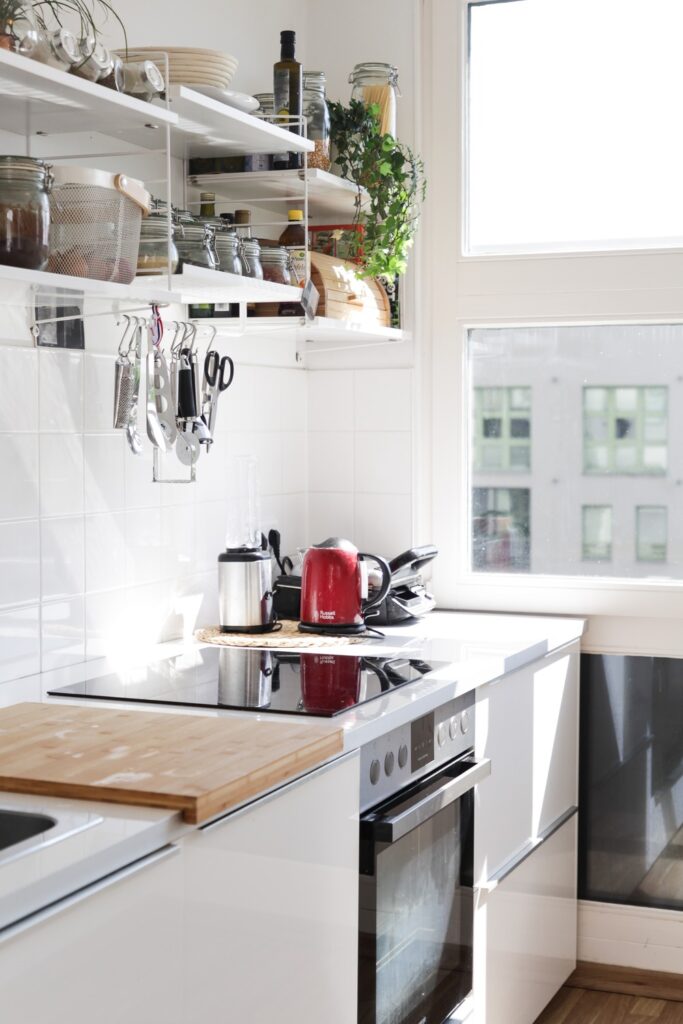The kitchen is often the busiest and most cluttered room in a home. Between appliances, cookware, dishes, food items and more, this space can easily become disorganized and stressful. However, with some strategic organization techniques, you can transform your kitchen into an efficient, tidy sanctuary.
This article explores 5 brilliant kitchen organization tips tailored for American homes. Implement these methods to declutter cabinets, streamline meal prep and spend less time searching for essential tools. With a little effort, your kitchen can become a highly functional and Instagram-worthy spot you love spending time in.
Introduction
As the hub for cooking and gathering, a cluttered kitchen takes a major toll on productivity and peace of mind. The average U.S. household has around 300,000 items total with many concentrated in the kitchen. This constant influx of groceries, dishes, gadgets and leftovers fuels clutter.
The result is crowded cabinets, overflowing drawers, and no room to prep and cook comfortably. Time spent searching for ingredients or tools leads to frustration. Plus dishes pile up in and around the sink, inviting bugs or odors. A disorganized kitchen creates daily stress.
However, a thoughtfully organized kitchen streamlines cooking and cleanup. Items have designated homes so meals come together seamlessly. Smart storage solutions effectively corral supplies while keeping them easily accessible.
This article will explore 5 tips to transform your kitchen into an organized oasis using storage solutions tailored for American spaces. With these strategies, you can take control of the clutter and create a kitchen that’s both beautiful and supremely functional. Let’s dive in!
#1: Categorize and Purge Regularly
The first step in any organizational project is editing down belongings to just the essentials. Take everything out of cabinets and drawers and sort into categories like:
- Dishes and serving ware
- Appliances and gadgets
- Food items like baking ingredients or oils
- Cookware and tools like pans, utensils, knives
- Cleaning and trash items like soaps, sponges, bins
As you sort, purge any items you don’t use often or duplicates. Be especially rigorous about expired food items and chipped dishes. Only keep items you need and use regularly.
Aim to remove 30% or more from your kitchen during this purge phase. Decluttering first provides a clean slate to then organize efficiently. Do this deep purge annually and quick prunes seasonally when switching out items.
#2: Designate Zones and Homes
Once purged down to essentials, it’s time to give everything a dedicated home. Group like items together in zones throughout the kitchen. Some examples:
- Baking zone: Rolling pin, measuring cups, flour, sugar together in a cabinet
- Spice zone: Spices and oils together in a drawer or wall-mounted rack
- Dishes zone: Plates, bowls, cups nested together in one or two cabinets
- Cleaning zone: Soaps, sponges, trash bags in a drawer or under the sink
Also consider:
- Frequently used items at the front with lesser used ones behind them
- Store items near where they’ll be used like utensils by the stove
- Place daily dishes in upper cabinets near the dishwasher and less used items up high or in the back
Strategic zoning saves searching time. Even kids can help cook and clean up when everything has an assigned home!
#3: Optimize Shelving and Storage
An organized kitchen optimizes every inch of existing shelving while also incorporating specialized storage solutions. Some tips:
- Use vertical space with shelf risers, stacked bins or baskets, and hanging wall racks or rails. Get items off the counter.
- Install pull-out drawers or shelves in blind base cabinet corners to access all space.
- Use shelf dividers, tiered racks, lid organizers and turntables to better organize cabinet space.
- Store bulky appliances to free up cabinet space with freestanding or mounted racks and garages.
- Invest in drawer dividers, cutlery trays, pan lids racks and other inserts to organize inside drawers.
Take advantage of all vertical and horizontal space using these affordable organizational tools tailored for kitchen needs.

#4: Establish Convenient yet Hidden Trash and Recycling
A kitchen runs most smoothly with garbage, recycling, and compost conveniently out of sight. Some tips for an efficient waste station:
- Under-sink pull-out cabinet organizers keep trash bins hidden but accessible. Use multiple sorts for trash, recycling, compost if available.
- For island prep stations, install small garbage disposal drawers to tuck trash out of sight as you cook.
- Use step levers for cabinets to open hands-free while prepping food.
- Keep compost bin on counter or under sink to easily dispose of food scraps as you cook if this service is available.
- Place recycling bin in a cabinet when not in use if space is tight.
Savvy waste management improves workflow and keeps mess contained out of sight.
#5: Add Personal Style that Inspires
Finally, don’t forget about aesthetics! While organization is practical, your style and personality should shine too. Some ideas:
- Incorporate favorite colors with small appliances, organizers, dishes and linens
- Use baskets, jars or open shelving for an airy farmhouse vibe
- Modernize with sleek dividers and containers in stainless steel, wood and acrylic
- Add warmth with woven baskets, antique-style jars and butcher block
- Use artwork, plants, rugs and lighting to make it “you”
A kitchen should ultimately inspire you to cook, create and gather. Add touches that spark joy alongside smart organizational systems.

Transform Your Kitchen Today
A cluttered kitchen leads to daily frustration while an organized space is a dream to cook and socialize in. Use these 5 tips – purging, zoning, optimizing storage, managing waste seamlessly, and adding style – to tackle even the most chaotic kitchens.
With some strategic sorting, editing and planning, you can have a kitchen that’s both beautiful and highly efficient. Trips to the grocery store and whipping up meals will become a breeze. Goodbye messy chaos, hello kitchen nirvana!





